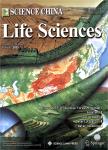A decade of Bt cotton in Chinese fields: Assessing the direct effects and indirect externalities of Bt cotton adoption in China
A decade of Bt cotton in Chinese fields: Assessing the direct effects and indirect externalities of Bt cotton adoption in China作者机构:Food Security and the Environment Program Freeman Spogli Institute for International Studies Stanford University School of Environmental and Biological Sciences Rutgers the State University of New Jersey
出 版 物:《Science China(Life Sciences)》 (中国科学(生命科学英文版))
年 卷 期:2010年第53卷第8期
页 面:981-991页
核心收录:
基 金:supported by the National Natural Science Foundation of China (Grant No. 70333001) the GMO Program of the Ministry of Agriculture (Grant No. 2009ZX08015-002) the International Development Research Center (Grant No. 105562-001) the Knowledge Innovative Program of the Chi-nese Academy of Sciences (Grant Nos. KSCX-YW-09 and KSCX2-YW-N- 039) the Rockefeller Foundation, Cornell University, and Oxfam for vari-ous years of the surveys from 1999 to 2007
主 题:biotechnology Bt cotton insecticide sustainability externalities China
摘 要:The objective of this study is to examine whether or not the gains from reduced spraying for bollworms are being sustained more than one decade after the initial adoption in 2007. Based on farm-level data collected by the authors in 1999–2007 in 16 villages from 4 provinces, this study shows that insecticides applied for controlling bollworms have declined. This analysis supports Chinese policy makers’ decision to not require refuges of non-Bt cotton fields. It also suggests that past studies may have underestimated the benefits from adopting Bt technology.




